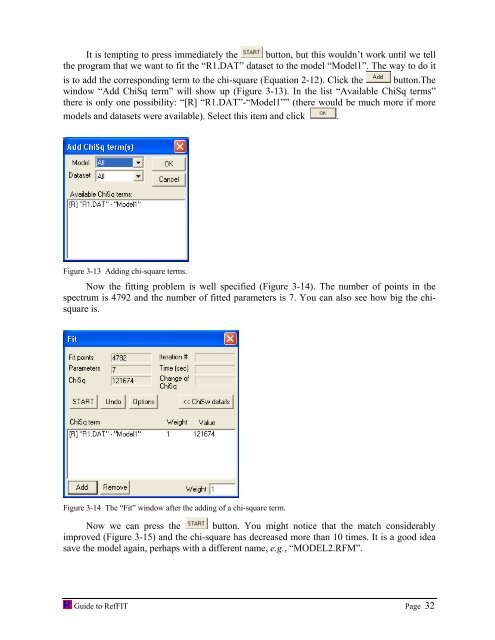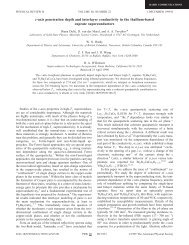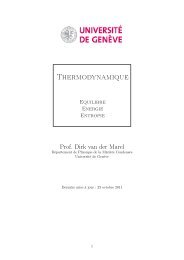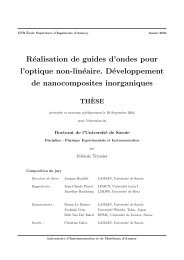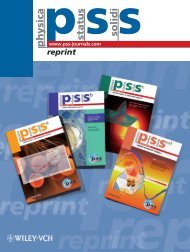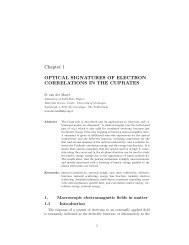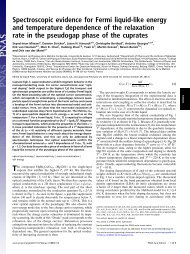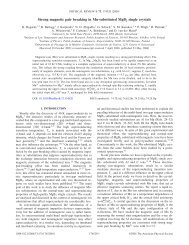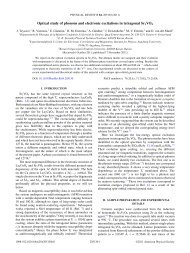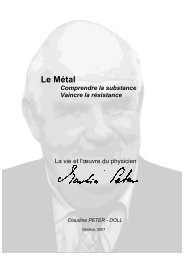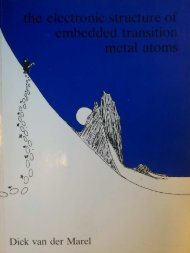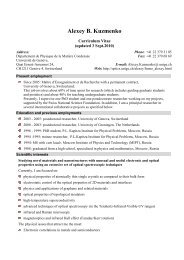software to fit optical spectra - Quantum Materials Group
software to fit optical spectra - Quantum Materials Group
software to fit optical spectra - Quantum Materials Group
You also want an ePaper? Increase the reach of your titles
YUMPU automatically turns print PDFs into web optimized ePapers that Google loves.
It is tempting <strong>to</strong> press immediately the but<strong>to</strong>n, but this wouldn’t work until we tell<br />
the program that we want <strong>to</strong> <strong>fit</strong> the “R1.DAT” dataset <strong>to</strong> the model “Model1”. The way <strong>to</strong> do it<br />
is <strong>to</strong> add the corresponding term <strong>to</strong> the chi-square (Equation 2-12). Click the but<strong>to</strong>n.The<br />
window “Add ChiSq term” will show up (Figure 3-13). In the list “Available ChiSq terms”<br />
there is only one possibility: “[R] “R1.DAT”-“Model1”” (there would be much more if more<br />
models and datasets were available). Select this item and click .<br />
Figure 3-13 Adding chi-square terms.<br />
Now the <strong>fit</strong>ting problem is well specified (Figure 3-14). The number of points in the<br />
spectrum is 4792 and the number of <strong>fit</strong>ted parameters is 7. You can also see how big the chisquare<br />
is.<br />
Figure 3-14 The “Fit” window after the adding of a chi-square term.<br />
Now we can press the but<strong>to</strong>n. You might notice that the match considerably<br />
improved (Figure 3-15) and the chi-square has decreased more than 10 times. It is a good idea<br />
save the model again, perhaps with a different name, e.g., “MODEL2.RFM”.<br />
Guide <strong>to</strong> RefFIT Page 32


